Something went wrong!
Hang in there while we get back on track
Best attractions in Catania

The Cattedrale di Sant'Agata in the heart of Catania combines Norman, Baroque, and Neoclassical architectural elements into an impressive work of art. Originally built in the 11th century and rebuilt several times after earthquakes, the cathedral now features a magnificent Carrara marble facade and intricately carved main portals.

The Elephant Fountain can be found on the Piazza del Duomo, and is an iconic symbol of the city. Featuring a unique black basalt elephant, affectionately known as 'Liotru', it carries an ancient Egyptian obelisk, rumored to hold magical protective powers against Mount Etna's eruptions.

In the magnificent Teatro Massimo Vincenzo Bellini in Catania, you will find one of the most beautiful opera houses in Italy from the 19th century, renowned for its exceptional acoustics. The theater, built in the style of the French Second Empire, impresses with its horseshoe-shaped auditorium featuring four tiers and an elaborately decorated interior, crowned by Ernesto Bellandi's stunning ceiling fresco.

Located along Via Etnea in the centre of Catania, the Bellini Gardens (Giardino Bellini) are the city's oldest and largest public park. Take a stroll between beautiful ornate stone paths, enchanting fountains and busts of notable Catanese musicians, writers, and politicians. The gardens also offer stunning views of Mt. Etna. It's a favored spot among students, couples, and locals alike.

Catania's fish market, located behind Piazza del Duomo, is a daily spectacle of fresh seafood and local life. Visitors are treated to a vivid display of Sicilian sea life, from massive swordfish to sea urchins, all amidst the lively banter of fishmongers and shoppers. To experience the market at its most animated, it's best to arrive early in the morning. It operates every workday morning until the early afternoon.

Directly opposite the Cathedral of Sant'Agata, you will find one of the most significant Baroque buildings in Catania. The Chiesa della Badia di Sant'Agata, designed by architect Giovanni Battista Vaccarini, captivates with its wavy façade and was rebuilt after the devastating earthquake of 1693 on the ruins of an older church.

This remarkable historical site contains ruins from two ancient Roman theatres. Visitors can explore the tunnels and passageways behind the seating areas, offering a brief but fascinating glimpse into Roman architectural ingenuity. The visit will take around 30min. It's not as photogenic as the theatre in Taormina and Syracuse, but if you like ancient sites it may be worth a visit.

Just a few steps from the Piazza del Duomo, you’ll find one of the most picturesque squares in the historic center of Catania. The Piazza dell'Università is lined with magnificent Baroque buildings, including the University Palace from the early 18th century and the Palazzo San Giuliano, built in 1738, both designed by the architect Giovanni Battista Vaccarini.

The impressive Castello Ursino, built between 1239 and 1250 by Frederick II of Swabia as part of a coastal defense system, stands proudly with its four distinctive round towers in the historic center of Catania. This square fortress, with walls 2.5 meters thick that once served as the royal residence for the Aragonese rulers, hosted the Sicilian Parliament in 1295, where important political decisions were made.

The Monastery of San Nicolò l'Arena in Catania is a striking symbol of the city's rich history and architectural beauty. Founded in 1558 and located just 10 minutes from the fish market, it stands as the second largest Benedictine monastery in Europe. Despite suffering from the disastrous earthquake in the 17th century, it was meticulously rebuilt, preserving its heritage. Today, it houses the Department of Humanities of the University of Catania and is a UNESCO World Heritage Site. Visitors can explore two grand internal cloisters, one of Sicily's most important libraries, and other areas usually closed to the public through a guided tour.

In the magnificent Palazzo Biscari, the most important private palace in Catania, you will experience exquisite Sicilian Baroque architecture. Built between 1695 and 1763 for the Paternò Castello princely family, the palace stands on the remnants of the 16th-century city wall and is one of the few structures that survived the great earthquake of 1693.
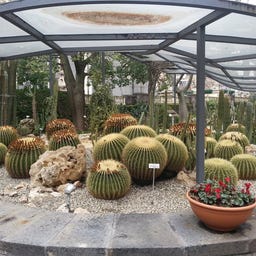
The botanical garden of Catania is a peaceful place offering an escape from the city's hustle for nature lovers and those who want to rest from the sun.
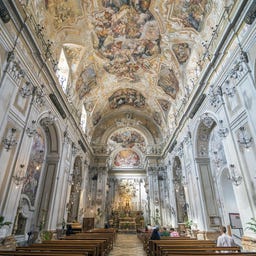
The Chiesa di San Benedetto is one of the most significant Baroque churches in Catania and is part of the UNESCO World Heritage site Val di Noto. This single-nave church, rebuilt between 1704 and 1713 after a devastating earthquake, impresses with its magnificent Scalinata dell'Angelo - a grand staircase lined with angel statues and an ornate wrought-iron gate. Inside, you'll find a ceiling entirely adorned with frescoes depicting scenes from the life of Saint Benedict, as well as an impressive main altar made of multicolored marble. The church, which has been used by Benedictine nuns since the 14th century, still houses an active monastery and can be visited through guided tours.

On the Piazza del Duomo, the vibrant heart of Catania, the city's main streets converge in front of the impressive Cathedral of Sant'Agata. The distinctive elephant fountain "u Liotru" made of lava stone, with its Egyptian obelisk, is the city's landmark and, along with the magnificent Palazzo degli Elefanti, draws everyone's attention.
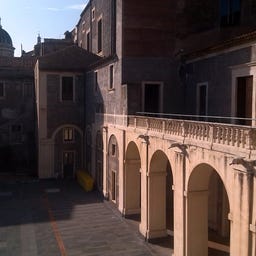
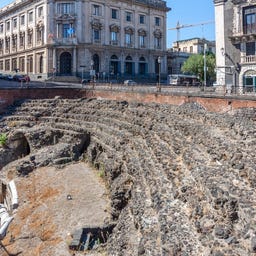
In the heart of Catania, beneath the Piazza Stesicoro, lies the largest amphitheater in Sicily - an impressive testament to Roman architecture from the 2nd century AD. This elliptical structure made of lava stone and marble once accommodated up to 30,000 spectators and was likely even used for naval battles, staged through a sophisticated water system.
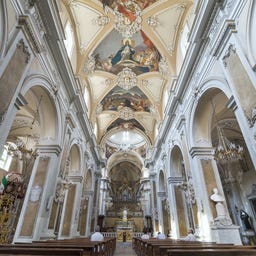
On the magnificent Via Etnea, the impressive Baroque facade of the Basilica Maria Santissima dell'Elemosina rises, built on the foundations of an ancient temple dedicated to Proserpina. Also known as the Basilica della Collegiata, this church was rebuilt in the late Baroque style after being destroyed by the earthquake of 1693, with Stefano Ittar designing the stunning limestone facade adorned with Corinthian columns and statues of saints. Inside, you will find three naves featuring marble floors and altars, as well as remarkable ceiling frescoes by Giuseppe Sciuti. The basilica has a rich history dating back to the 4th century, shaped by royal privileges, intense rivalries with the cathedral, and its elevation to a papal basilica in 1946.
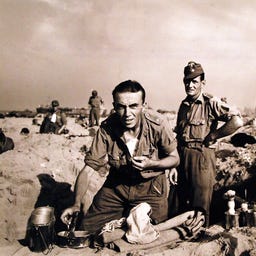

The impressive Porta Garibaldi greets you at the end of Via Giuseppe Garibaldi with a striking interplay of white Syracuse stone and dark lava blocks. The triumphal arch was built in 1768 by architects Stefano Ittar and Francesco Battaglia to commemorate the devastating lava eruption of 1669 and to celebrate the wedding of Ferdinand I.
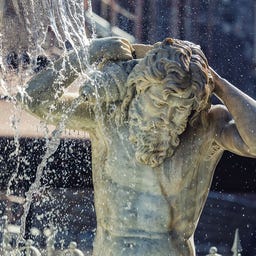
Located on the south side of the Piazza del Duomo, the Amenano fountain is a striking Carrara marble art piece sculpted by Tito Angelini in 1867. This masterpiece pays homage to the River Amenano, beside which the Greeks established the city of Katáne. The fountain features a young man holding a cornucopia, from which water cascades into a basin and then appears to flow like a sheet into the river below.

On Via Etnea, the main shopping street of Catania, the Piazza Stesicoro opens up to one of the liveliest squares in the Sicilian port city. Here, you can admire the excavated remains of the Roman amphitheater, which was rediscovered only in 1903, ten meters below street level. The square is lined with magnificent buildings like the Palazzo Tezzano and the Palazzo della Borsa, and it features an impressive monument dedicated to the composer Vincenzo Bellini.
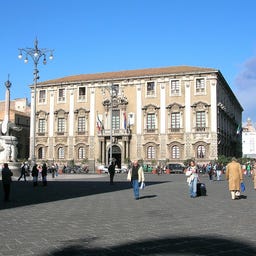
The impressive Palazzo degli Elefanti has been standing since the late 17th century at the picturesque Piazza del Duomo in the heart of Catania, where it still serves as the town hall. Designed in Baroque style by Giovan Battista Longobardo and Giovanni Battista Vaccarini, this magnificent building captivates with its rectangular façade adorned with columns, pilasters, and allegorical statues.

The Porta Uzeda, built in the late 17th century, connects the magnificent Piazza del Duomo with Via Dusmet in the heart of baroque Catania. This gate, designed in the Sicilian Baroque style, was erected in 1695 in honor of the Spanish Viceroy Giovanni Francesco Paceco and blends harmoniously with the city wall from the time of Charles V.
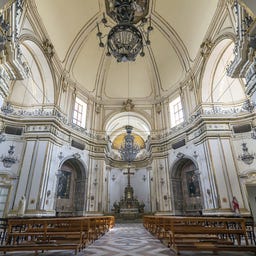
The Chiesa di San Giuliano is one of the four most important Baroque churches on the Via dei Crociferi in Catania, built between 1741 and 1754 after the devastating earthquake of 1693. The elegant church impresses with its geometrically harmonious, convex facade and features a magnificent main altar inside, adorned with allegories of faith and charity.
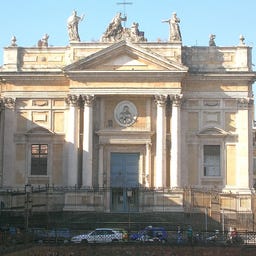
In the Chiesa di San Biagio, also known as Chiesa di Sant'Agata alla Fornace, you will find a moving piece of church history right in the heart of the neighborhood of the same name in Catania. This neoclassical building from the 18th century, designed by architect Antonino Battaglia, was constructed after the devastating earthquake of 1693 and houses under glass the remains of the oven where, according to tradition, Saint Agatha suffered her martyrdom.
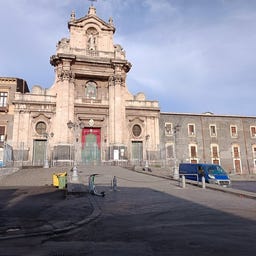
As the third largest church in Catania, the Basilica Santuario di Maria Santissima Annunziata al Carmine impresses with its magnificent facade designed by Francesco Battaglia and the imposing marble statue of the Madonna del Carmine above the main portal.

The Chiesa di Santa Maria di Gesù stands out as a characteristic church of the Etna region with its striking black-and-white facade made of basalt and light stone. This historic site, which already had a burial ground in the 5th century BC, saw the construction of the current church in 1442, and it was rebuilt in the early 18th century after the devastating earthquake of 1693.
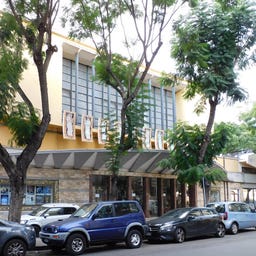
The Teatro Metropolitan in the center of Catania is one of the city's most important theaters, offering an impressive 1,780 seats for culture enthusiasts. Designed by architects Alberto Calza Bini, Giorgio Calza Bini, and Marcello Piacentini, it opened in 1955 as a combined cinema and theater. Today, it focuses solely on theatrical performances and attracts around 200,000 visitors each year, including about 9,000 subscribers.

In the tall brick chimneys of the Centro fieristico le Ciminiere, you can immediately recognize the industrial past of the former sulfur factory from the 19th century. The expansive complex, cleverly developed from the abandoned industrial buildings in the 1980s, now combines historic brick structures with modern steel constructions.
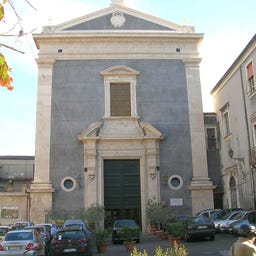
In the Chiesa di Sant'Agata la Vetere, you discover the first cathedral of Catania, which served as the bishop's seat from 380 to 1094. The simple late Baroque building with its distinctive facade was rebuilt in the 18th century after several destructions due to earthquakes and volcanic eruptions, and today it houses an impressive single-nave church space.
Dive into the history of Katane, the ancient predecessor of today's Catania, founded in the 8th century BC by Greek settlers under Tucle. This settlement, located at the foot of Etna, has a tumultuous history that began as early as the 13th century BC with the settlements of the Sicani and Siculi.
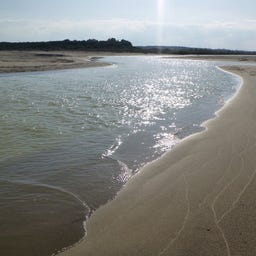
At the mouth of the Simeto, one of Sicily's most important nature reserves stretches over 2000 hectares, protected as a regional reserve since 1984. The oasis, originally initiated by Wendy Hennessy Mazza as a bird sanctuary, is home to a diverse coastal vegetation of reeds and tamarisks.
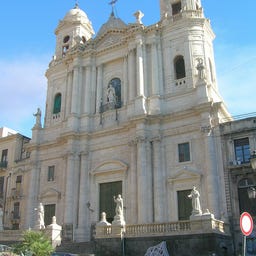
In the historic old town of Catania stands the Chiesa di San Francesco d'Assisi all'Immacolata, whose history dates back to the 13th century when Queen Eleonora d'Angiò founded the first church here in gratitude for her rescue from an eruption of Mount Etna.
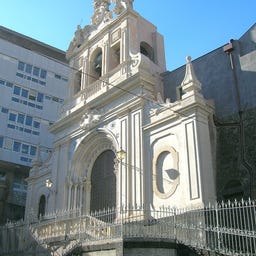
The Chiesa di Sant'Agata al Carcere in Catania uniquely connects the martyrdom story of Saint Agatha with over 2000 years of city history. At this historic site, where remnants of the Greek city wall merge with Roman structures, the patron saint of Catania was allegedly imprisoned and tortured.
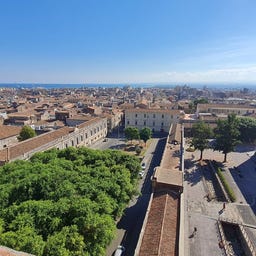
On the historic Piazza Dante, formerly known as "Piano dei Benedettini," you will find an impressive blend of history and modernity. The striking Church of San Nicolò l'Arena dominates the northwest side of the square, while the remains of the ancient Acropolis Baths can be found in the southern part, which have been archaeologically explored since 1981.
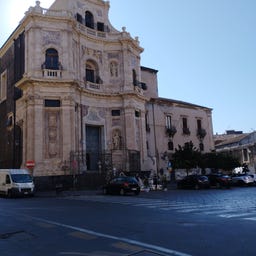
The Chiesa di San Placido is one of the most remarkable Baroque churches in Catania, built on historic ground where a temple dedicated to Bacchus once stood, as well as the presumed birthplace of the city’s patron saint, Sant'Agata. Founded in the early 15th century by Queen Bianca of Navarra and rebuilt by architect Stefano Ittar after its destruction in the 1693 earthquake, it was consecrated in 1723.
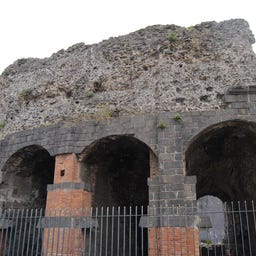
In the heart of historic Catania, you will find the ancient Odeon, an impressive semi-circular theater from the 2nd century AD, located right next to the Greek Theater. With its eighteen distinctive walls and originally seventeen covered rooms, it once accommodated around 1,500 spectators and served as a venue for music and dance performances, as well as a rehearsal space for shows in the neighboring Greek Theater.
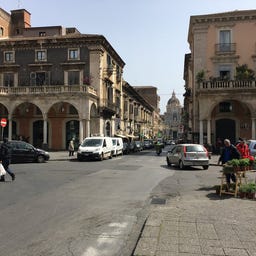
The Piazza Giuseppe Mazzini in the historic center of Catania captivates with its symmetrical design from the 18th century, which was created after the devastating earthquake of 1693. Originally designed as a marketplace by Giuseppe Lanza, the square impresses with its cross-shaped layout featuring four identical loggias, each supported by eight ancient marble columns. The surrounding palaces, including the well-preserved Palazzo Scammacca della Bruca, frame the square, which was formerly known as "Piano di San Filippo." While the historic markets now take place in other locations like the Pescheria, the architectural harmony of the square remains intact.
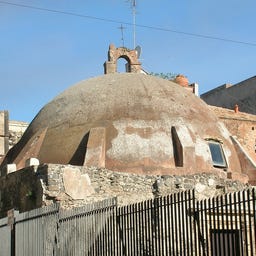
At the Terme della Rotonda, you can embark on a fascinating journey through two millennia of Sicilian history: here, the remnants of a Roman bath complex from the 1st/2nd century blend with a Byzantine church from the 6th century.
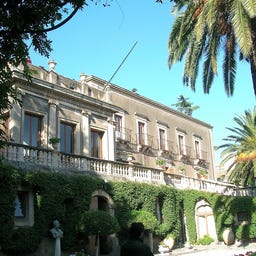
The magnificent Villa Cerami at the end of Via dei Crociferi in Catania combines baroque elegance with academic life. Built in the 18th century, this noble residence once hosted King Umberto I. and Queen Margherita, and it impresses with its portico designed by Gian Battista Vaccarini and the marble facade added by Carlo Sada in 1875.
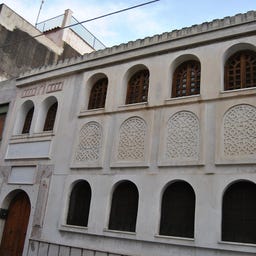
The Moschea di Omar in Catania is the first modern mosque in Italy and was opened in 1980. Designed by an Egyptian architect and funded by Muammar Gaddafi, the building impresses with its minaret and the distinctive crescent moon symbol.

At the corner of Piazza Stesicoro and Via Etnea, the magnificent Palazzo del Toscano stands, with construction beginning in the early 18th century based on designs by Gian Battista Vaccarini. Originally intended as the residence of the Paternò family, the palace was completed in the mid-19th century by architect Errico Alvino in the Neo-Renaissance style.

In this impressive church building from the early 18th century, you will find a faithful replica of the famous Santa Casa di Loreto. The current church, designed by Antonino Battaglia after the devastating earthquake of 1693, houses the venerated Byzantine icon "Madonna dell'Aiuto," which has attracted believers since 1372.
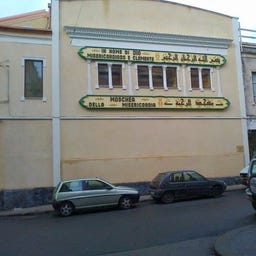
In a former theater in the heart of Catania, you will find the largest Islamic place of worship in Southern Italy. The Moschea della Misericordia spans three floors and 400 square meters, where up to 1,000 worshippers gather during Ramadan.

The Chiesa di Santa Maria della Guardia is an important parish church in the neighborhood of the same name in Catania, which has served over 7,000 worshippers since its inauguration by Cardinal Giuseppe Benedetto Dusmet in 1875.
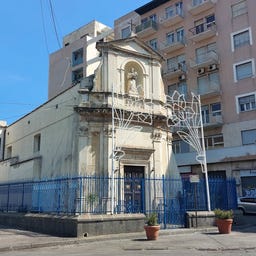
In the Church of San Gaetano alle Grotte, you experience a fascinating journey through 1800 years of church history, from early Christian origins to the Baroque period. The church, originally built in 262 AD by Bishop Saint Everius, has been destroyed and rebuilt multiple times—most recently after the devastating earthquake of 1693, which led to its current Baroque form.

The 15-meter-high marble monument honoring the composer Vincenzo Bellini dominates the eastern part of Piazza Stesicoro in Catania. Perched on a three-tiered pedestal is the seated statue of Bellini, surrounded by four additional figures representing his most famous operas: "Norma," "I puritani," "La sonnambula," and "Il pirata." Inaugurated in 1882, the monument uniquely connects music and the city's history—the seven steps symbolize musical notes, while Bellini's gaze is intentionally directed towards the patron saint, Sant'Agata.
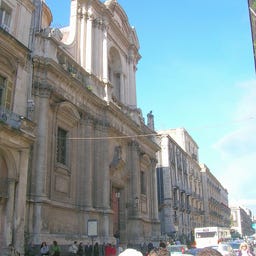
On the bustling Via Etnea, the Chiesa di San Michele Arcangelo ai Minoriti stands with its impressive two-story Baroque facade designed by Sebastiano Ittar. The current structure was built in the second half of the 18th century according to the plans of Francesco Battaglia, after the original church was destroyed by the devastating earthquake of 1693.

At the intersection of Via Etnea and Via Antonino di Sangiuliano, you will find the Quattro Canti, one of the most notable squares in Catania. Four magnificent palaces with rounded corners create an impressive octagonal space, including the Palazzo Carcaci and the historic Palazzo Geraci-Guerrera.
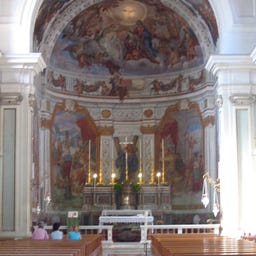
The Chiesa di Sant'Agata al Borgo was originally built in 1669 as a refuge for people fleeing the eruption of Etna. After being destroyed by the earthquake in 1693, the church was reborn in 1709 and today showcases an impressive stone facade flanked by lava stone statues of Saints Peter and Paul. Inside, you will find remarkable frescoes by Giovanni Lo Coco depicting the martyrdom of Saint Agatha. Located on the north side of Piazza Cavour, the church is not only a testament to a tumultuous history but also a symbol of the community's solidarity during crises, as a memorial plaque for the 1908 earthquake strikingly illustrates.
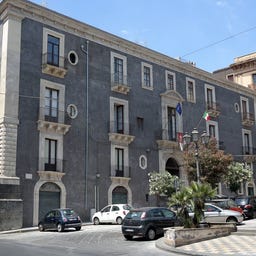
Built in the early 18th century on the remains of an older noble palace, the Palazzo Gravina Cruyllas now houses the Museo Civico Belliniano, dedicated to the famous composer Vincenzo Bellini, who was born here.
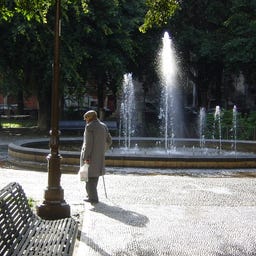
The historic Giardino Pacini is one of the oldest and most important public gardens in Catania, where washerwomen once worked by the banks of the Amenano River. The garden was named in 1879 after the composer Giovanni Pacini, whose marble bust, created by Giovanni Duprè, still adorns the entrance today.
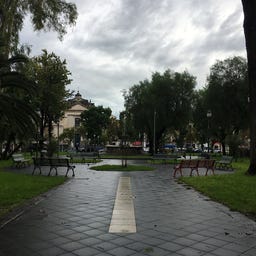
On the Via Etnea, about 2 km from the Piazza del Duomo, you will find the historic Piazza Cavour - a square that was established in the 17th century as a new settlement called "Borgo" after a devastating eruption of Mount Etna.
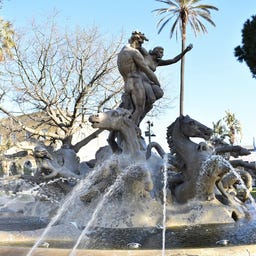
Right next to the main train station in Catania, you'll find the Fontana di Proserpina, one of the largest historical fountain complexes in Sicily. Created in 1904 by Giulio Moschetti, this monumental fountain dramatically depicts the abduction of Proserpina, an ancient myth closely tied to Sicily's history.
In the heart of Catania's historic center, you will find the Piazza Carlo Alberto, paved with lava stone from Mount Etna and named after the former King of Sardinia. This baroque square is flanked by two impressive religious buildings: the Santuario della Madonna del Carmine to the east and the Church of San Gaetano alle Grotte to the south. The local life thrives here, especially during the traditional market "Fera 'ô Luni," which regularly fills the square with bustling activity. Its central location between the green Villa Bellini, Via Umberto, and Corso Sicilia makes the piazza an important hub of the city.
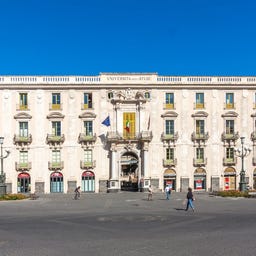
The magnificent Palazzo San Giuliano has been a defining feature of the Piazza dell'Università in the heart of Catania since the 18th century, standing opposite the historic university. Designed by Giovanni Battista Vaccarini in the Sicilian Baroque style, the palace was built between 1738 and 1774 for the Marquis Orazio Paternò Castello and impresses with its majestic portal featuring double coats of arms and marble columns.
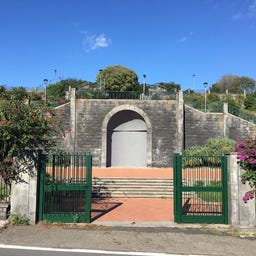
Catania's largest park stretches across volcanic terrain and impresses with its Mediterranean vegetation, featuring olive trees, bougainvilleas, and cacti. Among the paths made of lava stone, you'll find not only the remnants of an ancient Roman aqueduct but also modern facilities like a skate park and playgrounds.
In the oldest scientific museum in Sicily, founded in 1853, you can expect an impressive zoological collection housed in an elegant Art Nouveau building. After extensive restoration, the Museo di Zoologia has been showcasing its exhibits in a modern, open display format since 2021.
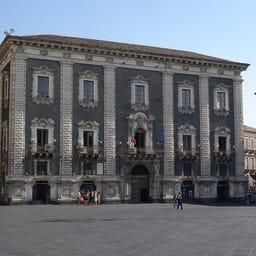
In the historic Palazzo del Seminario dei Chierici, right next to the Cathedral of Sant'Agata, you will discover an impressive collection of sacred art treasures from Catania and its surroundings across four floors. The nine exhibition rooms house precious liturgical items and artworks from the 14th to the 20th century, including the silver shrine of Sant'Agata and personal belongings of the bishops and cardinals of the archdiocese. From the rooftop terrace, you can enjoy a spectacular panoramic view of baroque Catania, the Piazza del Duomo, and Mount Etna, while in the basement, you can explore the ancient Terme Achilliane with the Amenano River.
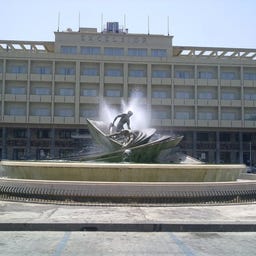
In front of the Grand Hotel Excelsior in Catania stands the monumental Fontana dei Malavoglia, which artistically interprets a dramatic scene from Giovanni Verga's famous novel. The fountain, made of travertine marble, depicts the shipwreck of the "Provvidenza" and was designed by the self-taught sculptor Carmelo Mendola, whose life's work was completed in 1975 after 19 years of construction. Following a comprehensive restoration in 2021, the fountain now shines in its original colors and impresses with modernized water technology and lighting.
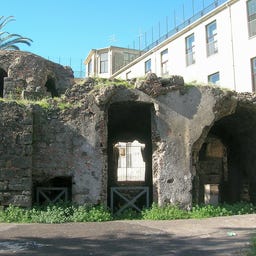
Near the Cathedral of Sant'Agata, you will discover one of the best-preserved Roman bathhouses in Europe, dating from the 3rd to the 5th century AD. The Terme dell'Indirizzo impresses with five main rooms, including an imposing caldarium with a dome nearly 10 meters high and three rectangular pools.
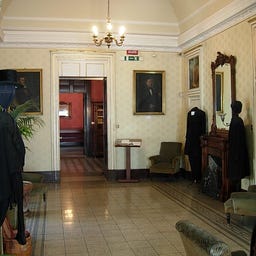
In the historic center of Catania, you will discover the Casa Museo Giovanni Verga, the former home of the most significant representative of Italian Verismo, Giovanni Verga. Located on the second floor, the museum preserves the original rooms where the writer spent his childhood and later lived for many years.
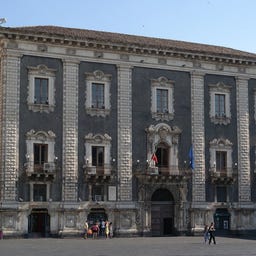
The impressive Palazzo del Seminario dei Chierici has shaped the south side of the Piazza del Duomo since the 18th century, fitting harmoniously between the Cattedrale di Sant'Agata and the Palazzo degli Elefanti. Founded as a seminary in 1572 and completely destroyed by the great earthquake of 1693, the palace was given its current form by architects Alonzo di Benedetto and Francesco Battaglia, featuring the distinctive light-dark facade made of Ispica stone and volcanic sand.
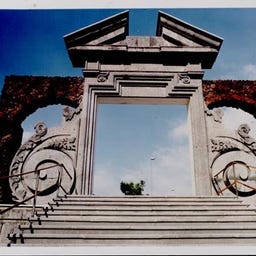
In the quiet neighborhood of Canalicchio, you will find Piazza I Viceré, a modern square with a historical soul, designed by architect Ivan Castrogiovanni between 1995 and 1998. The square, which covers over 5,000 square meters, impresses with its unique, slightly concave flooring made of lava stone and travertine, as well as three artistically decorated stone portals that recall the church facades of Via dei Crociferi. Named after the novel "I Viceré" by Federico De Roberto, the area is complemented by a spacious park featuring Mediterranean trees such as pines, cypress, and jacaranda. Just 300 meters away is the historic "Licatìa" spring, which has been supplying the Roman aqueduct since the 3rd century.

The Chiesa di San Francesco Borgia stands majestically on Via dei Crociferi, the most impressive Baroque street in Catania, where it blends harmoniously with three other magnificent churches. After being destroyed by the devastating earthquake of 1693, it was rebuilt between 1698 and 1736 in the Roman-academic style, featuring a distinctive double staircase and a façade adorned with marble columns. Inside, the light-filled three-nave space impresses with its main altar decorated with Sicilian agate and jasper, as well as the dome frescoes created around 1760 by Olivio Sozzi, depicting Christ and the continents that were missioned by the Jesuits.
At the corner of Via Vittorio Emanuele II stands the Palazzo Reburdone, one of the most impressive noble palaces in Catania from the late 18th century. Designed by Francesco Battaglia between 1776 and 1785 for the Guttadauro family, the palace was meant to highlight their social ascent into the Sicilian aristocracy.

The Villa Ardizzone in the heart of Catania is one of the most remarkable examples of Italian Art Nouveau from the early 20th century. Built between 1904 and 1907, it was designed by architect Carmelo Malerba Guerrieri, who significantly influenced the Liberty style in Catania.
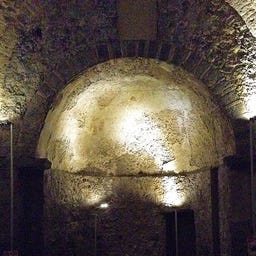
In the Byzantine Cappella Bonajuto from the 6th to 9th century, you can find one of the few preserved buildings from this era in Catania. The small chapel, which survived several earthquakes and was dedicated to Saint Salvatore until the 18th century, is now hidden within the baroque Palazzo Bonajuto in the historic Civita district.
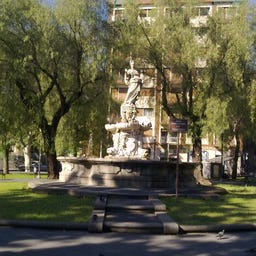
The Fontana di Cerere, also known as the "Fontana del Borgo," was commissioned by the Senate of Catania in 1757 during a devastating famine. The Baroque fountain, created by Giuseppe Orlando, features the goddess Cerere with a sickle on an intricately decorated Carrara marble base, from which water flows into several basins through grotesque masks.
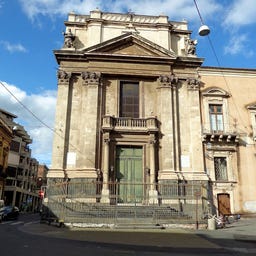
The Chiesa di San Domenico stands majestically with its impressive staircase and ornate wrought-iron gates above the Piazza San Domenico in the heart of Catania. This church, built in the Sicilian Baroque style and also known as Santa Maria la Grande, was reconstructed after the devastating earthquake of 1693 and captivates with its two-story façade and the portal flanked by columns.
The magnificent palace on Via Etnea was built in 1875 by Carlo Sada for the knight Giuseppe Paternò di Raddusa in the Neo-Renaissance style. The facade impresses with its combination of rustic masonry at the bottom and light pink plaster above, while the interior is adorned with elaborate Liberty-style decorations. The beautifully painted ceilings feature stunning frescoes by the artists Natale Attanasio and Alfonso Orabona.
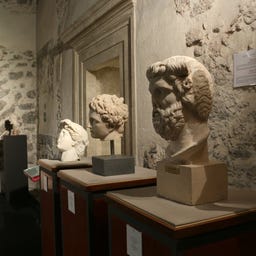
In the Palazzo Biscari, Ignazio Paternò Castello opened one of Italy's most significant museums in 1758, which quickly became a must-visit for educational travelers of the 18th and 19th centuries due to its art, coin, and natural treasures. In two specially built galleries, the Museo Biscari showcased around 8,000 ancient coins, valuable vases, mosaics, and impressive sculptures like the famous "Torso Biscari."

In the historic center of Catania, you'll find the Teatro Sangiorgi, a charming theater with 700 seats that has a rich history since its opening in 1900 with Puccini's "La Bohème." From its beginnings as an open-air stage to its roofing in 1907 and later use as a cinema in the 20th century, the venue has continuously evolved. After extensive renovations, it has served as a second stage for the Teatro Massimo Bellini since 2002, offering a diverse program that ranges from children's operas to inclusive theater performances. The elliptical hall, adorned with the distinctive paintings of Salvatore De Gregorio, provides the perfect setting for cultural encounters.
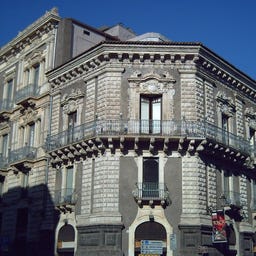
At the northwestern corner of the famous Quattro Canti stands the Palazzo San Demetrio, one of the most significant examples of late Baroque architecture in Catania. Commissioned by Don Eusebio Massa as the first palace after the devastating earthquake of 1693, it came into the possession of the Baron of San Demetrio in 1714.
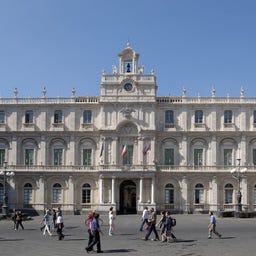
The impressive Palazzo dell'Università on Via Etnea has been the main seat of the University of Catania since the late 17th century, which was founded in 1434 by Alfonso V of Aragon. After the devastating earthquake of 1693, the current building was constructed under the direction of architects Francesco and Antonino Battaglia and Giovanni Battista Vaccarini.
The Abbazia di Santa Maria di Nuovaluce, built in the 12th century after a devastating earthquake, was expanded into a significant monastery by Artale I Alagona in 1360 and granted special privileges by King Federico IV of Sicily.
In the historic center of Catania, you'll find the Teatro Coppola, which opened in 1821 as the first municipal theater of the Sicilian metropolis. After a tumultuous history—ranging from its renaming in honor of the composer Pietro Antonio Coppola to its destruction during World War II—the theater was revived in 2011 by dedicated citizens.
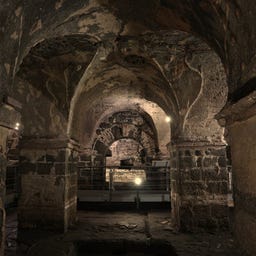
Deep beneath the Piazza del Duomo in Catania, the Terme Achilliane awaits you, offering a fascinating glimpse into Roman bathing culture from the 4th century. The expansive thermal complex, of which only a small part is accessible today, features a complex system of water basins and channels, as well as an impressive frigidarium hall with four mighty columns.
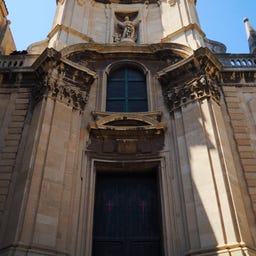
The Chiesa di San Camillo dei Mercedari is one of the four most important Baroque churches along the Via Crociferi in Catania and was rebuilt after the devastating earthquake of 1693. Constructed between 1723 and 1757, the church impresses with its concave façade made of white Syracuse stone, flanked by Corinthian columns and topped with pinnacles and urns.
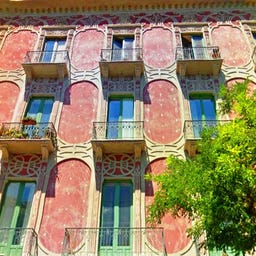
The Palazzo Rosa is an elegant residential building in the Liberty style - the Italian version of Art Nouveau - located near the Catania Central Station. Designed by Fabio Majorana, it was built between 1903 and 1905 and stands as an excellent example of the architectural spirit of the early 20th century.
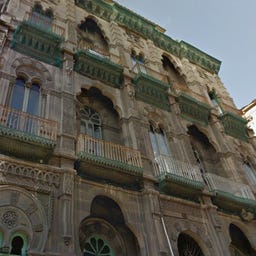
In the heart of Catania, you'll find the impressive Palazzo Mazzone on Via Umberto I, a historic building from the early 20th century. Designed by architect Tommaso Malerba in 1904, the palace stands out with its neo-Moorish style and is considered an outstanding example of Catania's eclectic architecture.
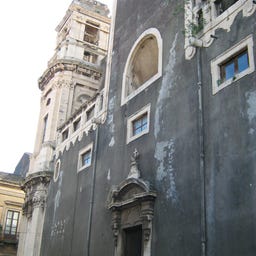
The Chiesa della Santissima Trinità in Catania impressively combines the style of Sicilian Baroque with an unusual concave façade designed by Francesco Battaglia. Founded in the 14th century and rebuilt in the mid-18th century, this church houses valuable paintings by Baroque masters Olivio Sozzi and Sebastiano Conca.
The Lago di Nicito was an impressive natural phenomenon in ancient Catania, formed by a volcanic eruption of Mount Etna around 406 BC, which dammed the Amenano River. Spanning 6 kilometers and over 15 meters deep, the lake, whose name comes from the Greek word for "invincible," was a popular spot for villas and sailing regattas.
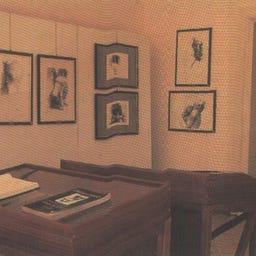
In the historic Palazzo Gravina Cruyllas, which was once the residence of the composer Vincenzo Bellini, you will discover an impressive collection of 150 original works by the Italian artist Emilio Greco. The pieces, created between 1955 and 1992, include sculptures with classical themes such as "Nausicaa" and "Medea," as well as a significant collection of lithographs and etchings.
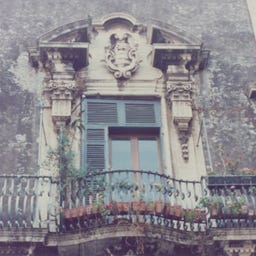
In the heart of baroque Catania stands the Palazzo Asmundo, a magnificent example of Sicilian noble architecture from the early 18th century. Designed by Giovanni Battista Vaccarini, the palace was built during the reconstruction following the devastating Val di Noto earthquake of 1693 and impresses with its grand two-story façade featuring a portal flanked by columns.
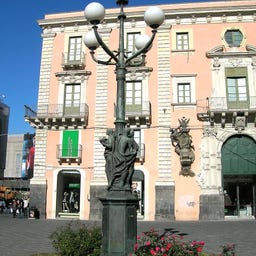
The Palazzo Gioeni, built in 1743, is a significant example of Sicilian Baroque architecture located on Via Etnea, right by the Piazza dell'Università in Catania. Commissioned by the Duke Gioeni d'Angiò, the palace was likely designed by Gian Battista Vaccarini and impresses with its magnificent entrance portal made of white stone.
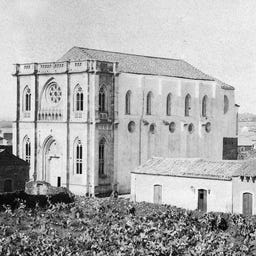
The Chiesa di Santa Maria de La Salette, built in the neo-Gothic style, has been a defining feature of Catania's historic center since 1874, with its distinctive red-brown brick facade and white stone decorations. After being destroyed by air raids in 1943, the church was meticulously rebuilt and now impresses with its light blue, star-adorned ceiling and a statue of the Madonna of La Salette that originates from Paris.

The Chiesa di Santa Chiara is an impressive example of Sicilian Baroque architecture in the heart of Catania, rebuilt by architect Giuseppe Palazzotto after the devastating earthquake of 1693. The three-story facade is particularly notable for the loggia on the top floor, from which the nuns of the Order of Poor Clares observed the annual Procession of Sant'Agata.
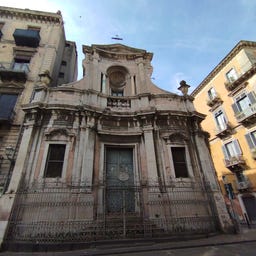
The Chiesa di San Martino dei Bianchi in Catania impresses with its wavy Baroque facade, designed by the famous architect Stefano Ittar in the 18th century. The church was built after the devastating earthquake of 1693 by the Archconfraternity of the Bianchi, which took care of the burial of those sentenced to death.

In the main square of the historic Cibali district of Catania stands the Chiesa della Divina Maternità, which the locals still refer to as "Madonna delle Grazie." The modern church was built in the late 1940s on the ruins of its predecessor, which was destroyed during the Allied bombings in 1943.
In the historic center of Catania, you will find the Palazzo Valle, an impressive example of Sicilian Baroque with its characteristic curved balcony front. Designed by Gian Battista Vaccarini, the palace was built after the devastating earthquake of 1693 and captivates with its striking portal featuring an elaborate tympanum, above which the central balcony rises.
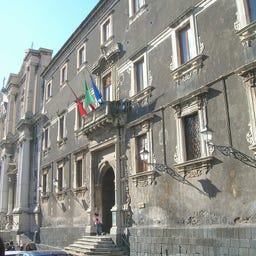
On the picturesque Via dei Crociferi stands one of the most impressive Jesuit buildings in Sicily, which has been a UNESCO World Heritage Site since 2002. The magnificent 18th-century palace captivates with its baroque facade and four courtyards, including a cloister with a columned loggia and a distinctive black-and-white striped floor pattern in the style of Francesco Borromini.

In the historic center of Catania, you'll find the renowned Conservatorio Vincenzo Bellini, named after the famous composer and son of the city, Vincenzo Bellini. The musical tradition of this institution dates back to the 16th century, when the first music school was established at the Jesuit college in 1555. From a municipal music school initiated in 1947, it evolved into the current conservatory, which has been a state institution since 2020, training around 700 students. As part of the European network of music academies and conservatories, this institution is now a vibrant center for music education in Sicily.
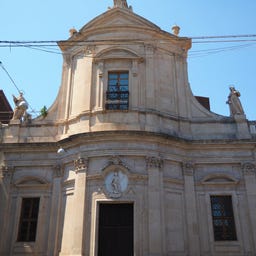
The Chiesa di Santa Maria della Purità sits atop the Montervergine hill in Catania and has a rich history since its founding by Nicolò Tedeschi in 1775. The church, designed by Antonino Battaglia, combines baroque elements like its curved façade with classical restraint, adorned with Corinthian columns and a remarkable portal featuring a depiction of Mary.
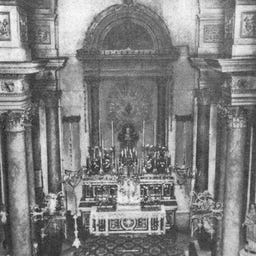
The Chiesa di Sant'Euplio has a rich history that dates back to 1548, when it was built on the site of an early Christian temple. Today, only the transept and the right wall of the original church, dedicated to the city’s patron Sant'Euplio, remain.
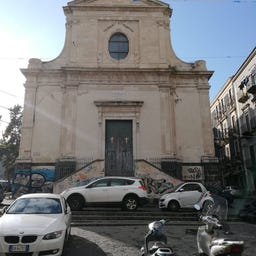
The now-abandoned Santa Maria dell'Indirizzo owes its unusual name to a legend about Don Pedro Téllez-Girón, who had a church built here in the early 17th century after being rescued from a shipwreck. Behind the simple church building with its distinctive double staircase lie the remains of the Terme dell'Indirizzo, Roman baths from the 3rd to 5th century. The baroque decorations of the side portals reflect the typical style of Catanese church architecture from the 18th century, even though the building is not in good condition today. The former Carmelite monastery now houses a school, while the Roman baths were used as storage rooms in later centuries.
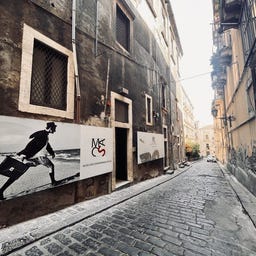
The "Museum of Contemporary Art Sicily" is a private museum located within the Badia Piccola of the Monastery of San Benedetto on via Crociferi in Catania. The building is attributed to Giovanni Battista Vaccarini and is connected to the Badia Grande via the arch on via Crociferi. It can be accessed from via San Francesco d'Assisi, 30. The museum features permanent collections of contemporary artists and exhibitions.
